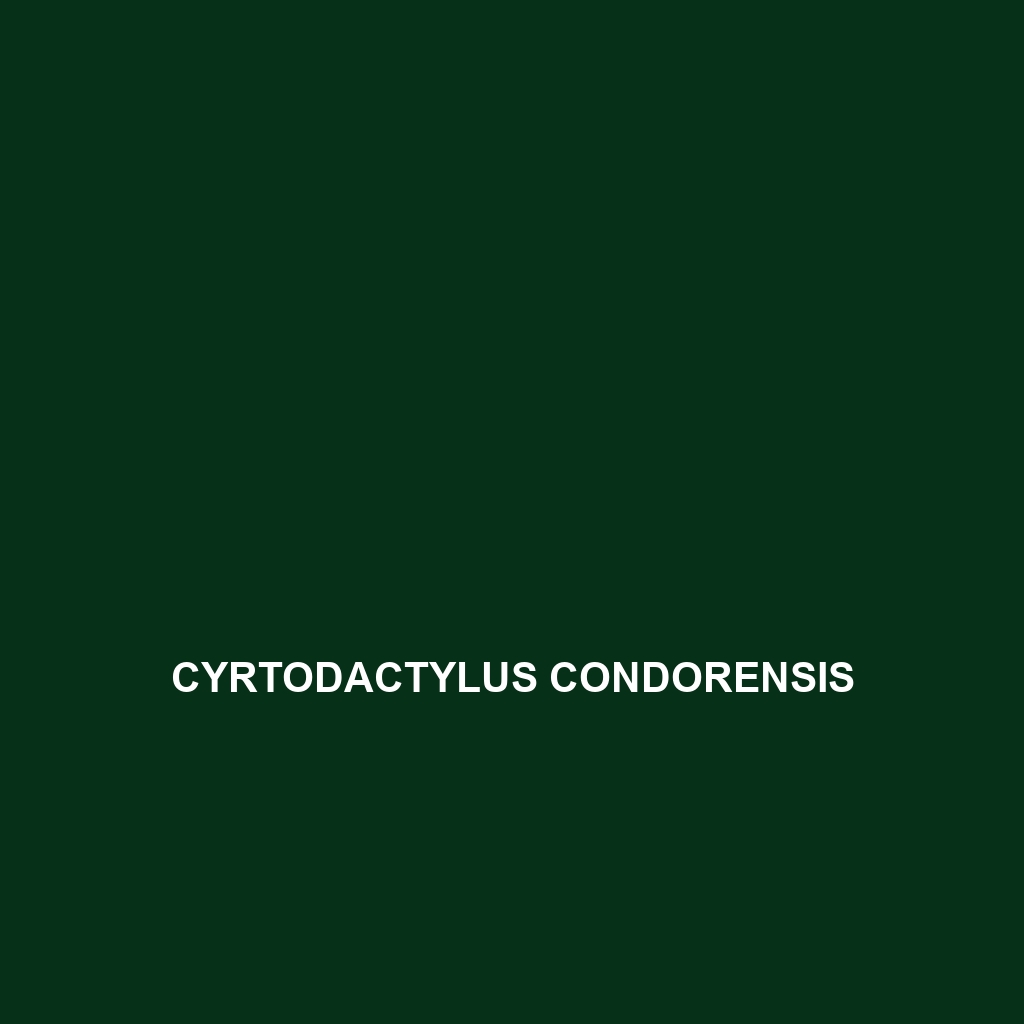Cyrtodactylus collegalensis: A Comprehensive Species Description
Common Name: Cyrtodactylus collegalensis
Scientific Name: Cyrtodactylus collegalensis
Habitat
Cyrtodactylus collegalensis, commonly known as the Collegal Gecko, is primarily found in the moist deciduous forests of South India, specifically in the Western Ghats region. This species thrives in rocky outcrops and crevices, preferring areas with significant humidity and cover. The elevation range of its habitat typically spans between 900 to 1,200 meters above sea level, providing a cool and sheltered environment.
Physical Characteristics
Cyrtodactylus collegalensis is a medium-sized gecko, measuring approximately 10 to 15 centimeters in length. Its coloration varies from light brown to dark gray, often featuring distinct dark bands along its body that serve as excellent camouflage against rocky surfaces. The gecko displays a flattened body shape, robust limbs, and large, expressive eyes, enabling it to navigate its rugged habitat effectively.
Behavior
This gecko is primarily nocturnal, becoming active at dusk to hunt and forage. Cyrtodactylus collegalensis exhibits arboreal tendencies, often seen climbing on trees and rocks in search of food. Its behavior includes skittish movements when threatened, allowing it to quickly escape from predators. This species is also known for its unique vocalizations during mating rituals, which can be a significant attraction for researchers and enthusiasts alike.
Diet
Cyrtodactylus collegalensis is insectivorous, feeding mainly on a diet of small insects such as crickets, beetles, and moths. This gecko displays opportunistic eating habits, often consuming whatever is readily available in its environment. During its nocturnal foraging, it utilizes its keen eyesight and sense of smell to locate prey.
Reproduction
The reproductive habits of Cyrtodactylus collegalensis involve a seasonal breeding cycle, typically occurring during the monsoon months from June to September. Females lay clutches of typically two eggs in hidden locations among rock crevices or vegetation. The eggs have an incubation period of approximately 60 days, after which the hatchlings emerge fully formed and are independent from birth.
Conservation Status
Cyrtodactylus collegalensis is currently classified as Vulnerable by the International Union for Conservation of Nature (IUCN). Habitat loss due to deforestation, agricultural expansion, and climate change poses significant threats to its population. Preservation of its natural habitat is critical for ensuring the survival of this unique species.
Interesting Facts
– The Collegal Gecko is known for its ability to adapt to various microhabitats within its range, showcasing incredible resilience.
– It has a unique skin texture that aids in moisture retention, which is vital for survival in its humid ecosystem.
– Local folklore often mentions the protective qualities attributed to this gecko, making it a subject of fascination among native communities.
Role in Ecosystem
Cyrtodactylus collegalensis plays a crucial role in its ecosystem as both a predator and prey. By controlling insect populations, it contributes to the ecological balance within its forest habitat. Additionally, this species serves as a food source for larger predators, maintaining the food chain dynamics in its native environment.
